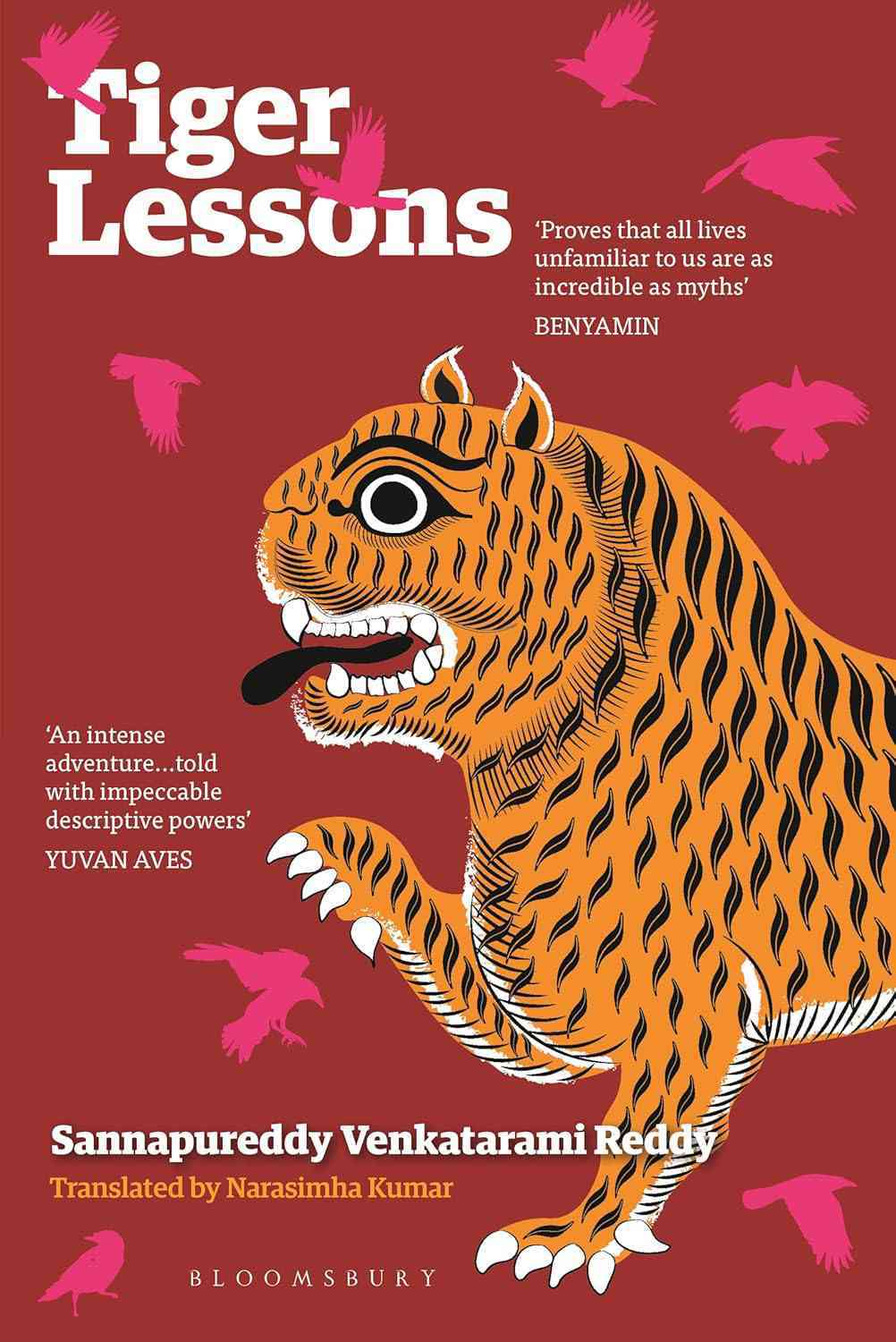“When a hundred lives are lying hungry in the backyard, how can I eat food here?” Gurappa questions his family when they ask him to eat his meal in peace without bothering about the sheep in the pen. Just like other shepherds in his village, Gurappa measures his own happiness by the merry bleatings of his sheep. The fact that he was unable to enjoy his meal while the animals starved was far-fetched for his family. It often earned him a look of disapproval from them. But it reveals Gurappa’s character immediately, and along with it, the worldview of this unusual and striking novel.
Konda Polam by Sannapureddy Venkatarami Reddy has been translated into English as Tiger Lessons by Narasimha Kumar from the Telugu. It explores the lives of shepherds, locally known as gollas while their village, situated at the foothills of the Nallamala forests in the Rayalaseema region of Andhra Pradesh, experiences the devastating consequences of famine.
The novel captures the ordeals of the gollas during Konda Polam, a practice where shepherds take their flocks to graze deep inside the forests during famine. This period was particularly difficult for shepherds as food and water were scarce. They had to survive on rationed food of hard millet rotis, jaggery, pickles, onions, and rice. As if surviving on rationed food for weeks on end was not enough, the constant anxiety of not having enough water for themselves and their flock increased their hardship.
The rustic idiom
For someone like me who has lived their entire childhood immersed in nature, over time, I have developed a deep appreciation for the natural world.
The dense and detailed description of pastoral life in Tiger Lessons can only be explained by Reddy’s true understanding of the Nallamala region. He evocatively portrays the truth of such a life, the communities’ resilience, and their ability to withstand environmental shocks while adapting to their new circumstances. Reddy’s words have a magical way of climbing into the readers’ hearts. I would like to especially mention the exquisite description of the fortitude of shepherds during Konda Polam.
Tiger Lessons offers an honest perspective of everyday experiences and emotions of the golla, as well as yaanadi, and sugaali tribes who live in the Nallamala region. In fact, the translation of local Telugu idioms and proverbs adds a layer of richness to the story. It is these unique elements that make this novel a captivating read.
The tribesmen’s banter and witticisms signify how individuals and groups blend into social structures, systems, or networks, often with long-standing historical or cultural roots. Though a few aspects of the translation might appear unrefined to a sensitive reader, I believe that for a translator who wants to capture realities as they are, he chooses this route to convey unpleasant truths. In this novel, Kumar appears to have rejected an idealised translation style.
“Springs of the Eternal Soul”, “Mead of the Bald Oxen”, “Guy with Crooked Ears”, “Frolic Springs”, and “Pile of Bean Creepers” – the names of places awakened wistfulness in me for a time that is long bygone, and to a land into which I have never stepped into.
However, when a novel narrates a life across several pages, its novelty wears off after a while. In Tiger Lessons, while this may be the case, the author introduces surprise elements to keep the story interesting. A disruptive moment comes when the gollas encounter tigers from whom they must defend themselves and their flock. There is another unusual scene featuring the courtship behaviours of a male and a female python. The male follows a trail of scent and mating calls left by the female, eventually copulating in the wilderness. It is impossible for a reader not to be struck by the skill and artistry woven into these descriptions, especially those of the animal kingdom.
A hard, merciless world
Tiger Lessons also draws attention to social injustices faced by the yaanadi tribe through the lens of true events, where, driven by greed, vested interests commit environmental crimes by exploiting natural resources. The tribe who ekes out living by fishing, hunting, and foraging – wild turmeric, hill pepper, jungle millets, medicinal herbs, and various edible roots get sucked into a world of crime. Reddy writes piercingly about the organised red sandalwood smugglers who thrive in the Nallamala forests. These smugglers cater to a lucrative black market by turning the poor yaanadis into scapegoats. A tribe that possesses only forest survival skills, therefore, becomes easy prey to law enforcement agencies. The realism is deepened by the fact that Reddy grew up only a few miles from the foothills of the Nallamala ranges.
Tiger Lessons also reminded me of Man-Eaters of Kumaon, The Temple Tiger, and The Man-eating Leopard of Rudraprayag by Jim Corbett, not in the way that Corbett, a hunter, naturalist, and writer, tracked man-eating tigers and leopards, but more in terms of the writing style.
Tiger Lessons encourages patience, persistence, and a deeper appreciation for natural rhythms. Readers will also be inspired to step away from a purely urban or technologically driven existence and reconnect with the natural world, fostering a greater understanding of ecological balance and sustainability.
The characters in this book are multifaceted and sometimes they contradict their original personalities. Reddy has captured not just the misgivings of the human heart but also of the animal and plant kingdoms. A profound love for the natural world turns out to be a powerful catalyst for Ravi, the software engineer turned shepherd. After experiencing Konda Polam for the first time, Ravi is inspired to make life-altering decisions towards environmental activism and conservation work.
As the translator, Kumar has strived to maintain Reddy’s original intent and voice. He displays a strong linguistic and etymological knowledge of the lives he’s written about.
Tiger Lessons is a rare novel. It gives the reader lessons in various disciplines – geography, anthropology, biology, botany, economics, and agriculture. Not only does it create a richer and more personal experience but it also gives us a unique sensory experience that will be hard to forget long.

Tiger Lessons, Sannapureddy Venkatarami Reddy, translated from the Telugu by Narasimha Kumar, Bloomsbury.










